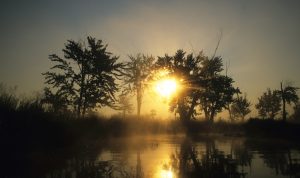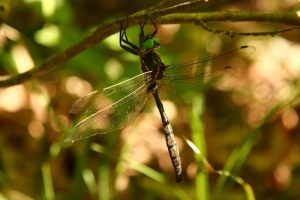Nicholas Armstrong, guest contributor – Nature Conservancy of Canada
In the summer of 2019, I had the pleasure of working as a conservation technician for the Nature Conservancy of Canada (NCC). While I was working out of the Norfolk office in southwestern Ontario, I spent a lot of time in restored fields and wetlands.
I believe that restoring and creating wetlands and the habitat that surrounds them is very important in the protection and recovery of at-risk species. From doing activities such as invasive species control, wetland monitoring and restoration monitoring, I have seen incredible species like eastern fox snake, flowering dogwood and common merganser, all of which are found in these restored areas.
Habitats like these, in areas dominated by human land use, can give native plants and give animals a place to live and can assist with the recovery of at-risk species. Restoring habitat can also combat the decline of other species that are not yet at risk. During my time at NCC, I had the opportunity to work on properties where wetland creation had occurred in previous years and as early as this past spring. These wetlands, despite their age, all had one thing in common: they were teeming with wildlife. Every time I see wetlands, I can’t help to notice how stunning all the wildlife and plants are.
Wetlands can be beneficial to not just local and migrating wildlife but to regional water quality as well. They help filter water runoff from roads and farms by trapping pollutants, like heavy metals and excess nutrients. This happens because microorganisms and plants, like cattails, absorb and use these nutrients before they flow into rivers or lakes. Without wetlands, runoff can get into the Great Lakes and other water sources and cause a nitrogen and phosphorus overload. Too much of these nutrients can lead to algal blooms and other water quality problems.
Wetlands also benefit the local area and ecosystems as a whole by helping with problems like flooding and sedimentation. They also act as carbon sinks by trapping carbon from the air and from organic matter. In addition, wetlands have recreational and aesthetic value, as they make great spots for birding.
From providing habitat for wildlife to helping keep the Great Lakes and our drinking water clean, the benefits of wetlands can’t be overlooked.
Thank you to the Intact Financial Corporation for supporting wetland creation projects in southwestern Ontario.
~30~
A version of this post first appeared in Land Lines, the Nature Conservancy of Canada blog.





